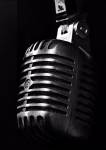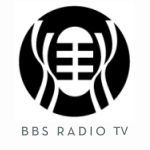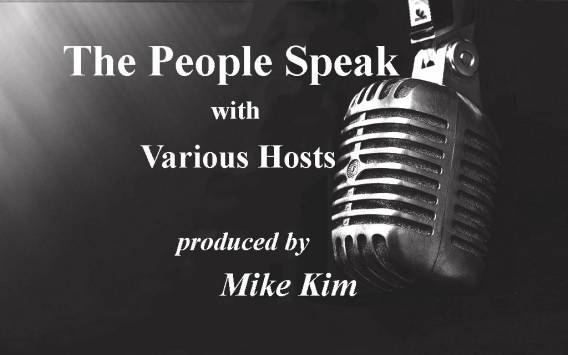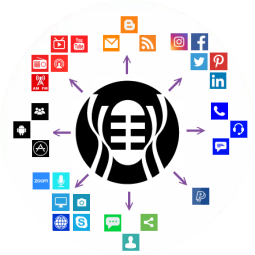The People Speak

The People Speak has evolved over the years with many great guests who have been interviewed by some very fine hosts.
We are a 55 minute show airing every other Sunday between 5-6pm Pacific/8-9pm Eastern. The show features a guest interview from any number of realms of interest (entertainment, science, philosophy, healing, spirituality, activism, politics, literature, etc.).
The guests share their stories, lives, strategies, books, philosophy, films, music, or whatever it is they use as a vehicle for making a difference for the better.
The radio show name, The People Speak, is based on the idea of allowing our audience - the People - a chance to interact with the guests during the hour, and we take phone or text questions from them during the interview.
Past guests include such notables as Nobel Peace Laureate Archbishop Desmond Tutu, the late Howard Zinn, Nobel Laureates Mairead Maguire, Shirin Ebadi, Kathryn Najimy, Oliver Stone, Jesse Ventura, Richard Belzer, Cynthia McKinney, Cindy Sheehan, Scott Horton, Joan Jett, Willie Nelson, George Galloway, Roseanne Barr, Ed Asner, Chevy Chase, as well as various reps from Amnesty International, UN World Food Programme, and many others.
Guest, Brad Hoff

BRAD HOFF is an independent journalist, teacher, and Marine veteran. He is the founder and managing editor of Levant Report and has written for Antiwar.com, Foreign Policy Journal, Assyrian International News Agency, Medium News & Politics, Strategic Culture Foundation, Commonweal Magazine, Third World Resurgence Magazine, and others. His work has been referenced in publications ranging from The Huffington Post to The Daily Beast to Headline and Global News (HNGN) to Middle East Eye, as well as by RT News, CounterPunch, WikiLeaks, The Daily Mail Online (UK), and many others.
A Marine in Syria by Brad Hoff
Silhouettes of Beauty and Coexistence before the Devastation
He who has not lived in the years before the revolution cannot know what the sweetness of living is.
— Talleyrand, via Bertolucci, from the 1964 film Prima della Rivoluzione
IRAQ, LIBYA, SYRIA… Countries ripped apart through sectarian and political violence in the aftermath of cataclysmic external interventions: American invasion and occupation in Iraq, NATO intervention in Libya, and international proxy war in Syria. Mere mention of these countries conjures images of sectarian driven atrocities and societal collapse into the abyss of a Hobbesian jungle. And now it is commonplace to just assume it’s always been so. Increasingly, one hears from all corners of public discourse the lazily constructed logic, “but they’ve always hated each other”… or “violence and conflict are endemic to the region.” But it was not always so — I found a place of beauty, peace, and coexistence in a Syria that is now almost never acknowledged, and which risks being forgotten about. But Syrians themselves will never forget.
I SERVED IN THE MARINE CORPS during the first years of the Iraq War and was a 9/11 first responder while stationed at Headquarters Battalion Quantico, 2000–2004. I thought I knew something about Iraq upon the start of our new “war on terror:” Arab culture, with its intrinsic primal religious passions and resulting sectarian divisions, must be brought to heel under Western values of pluralism, secularism, and equality if peace and stability are to ever have a chance. This was a guiding assumption among the many Marine officers, active and retired, that I conversed with during my years at Quantico. Iraqis and Middle Easterners were, for us, abstractions that fit neatly into categories learned about by viewing a C-SPAN lecture, or perhaps in a college class or two: there are Sunnis, Shia, some dissident sects, they all mistrust each other, and they all want theocratic states with their group in charge.
My first visit to the region while desiring to study Arabic in 2004, just after completion of active duty service, and while still on the inactive reserve list, began a process of undoing every assumption I’d ever imbibed concerning Middle East culture, politics, and conflict. An initial visit to Syria from Lebanon was the start of something that my Marine buddies could hardly conceive of: Damascus became my second home through frequent travel and lengthy stays from 2004 to 2010, and was my place of true education on the real life and people of the region. While fellow service members were just across Syria’s border settling in to the impossible task of occupying a country they had no understanding of, I was able view a semblance of Iraq as it once was through the prism of highly stable Ba’athist Syria.
The other dominating interest that drew me to Syria was the country’s ancient churches and Christian communities. Discovery of the much neglected truth that the region has always been much more diverse than tends to be acknowledged did much to undo the false assumptions of my Texas Baptist childhood. I must admit that I grew up with the usual American stereotypes of the Middle East. To most Americans, the notion of Middle Eastern Christianity sounds like an oxymoron — or is at the very least highly suspect. Many Arab and Eastern Christians are asked, upon arriving in the U.S. for visit, work, or immigration, “when did you convert from Islam?” During the post 9/11 Bush years, when Syria as part of the “Axis of Evil” became a central formulation of U.S. foreign policy, such common cultural assumptions became even more deeply ingrained. How could one be a Christian and a citizen of a “rogue” Middle East state? And yet, Christians have called Syria their home for many hundreds of years prior to the foundation of the modern nation-state of Syria.
As I began to learn more about the multi-ethnic and religiously mixed kaleidoscope that is modern Syria, I marveled at how such a country could live in relative peace and stability in a region commonly perceived to be one of the most historically tumultuous and war racked on Earth, and I had to go and see for myself.
Damascus is a modern, bustling city. Manfred Schweda
DURING MY FIRST WEEKS in Damascus, I was pleasantly shocked. My preconceived notions were shattered: I expected to find a society full of veiled women, mosques on every street corner, religious police looking over shoulders, rabid anti-American sentiment preached to angry crowds, persecuted Christians and crumbling hidden churches, prudish separation of the sexes, and so on. I quickly realized during my first few days and nights in Damascus, that Syria was a far cry from my previous imaginings, which were probably more reflective of Saudi Arabian life and culture. What I actually encountered were mostly unveiled women wearing European fashions and sporting bright makeup — many of them wearing blue jeans and tight fitting clothes that would be commonplace in American shopping malls on a summer day. I saw groups of teenage boys and girls mingling in trendy cafes late into the night, displaying expensive cell phones. There were plenty of mosques, but almost every neighborhood had a large church or two with crosses figured prominently in the Damascus skyline. As I walked near the walled “old city” section, I was surprised to find entire streets lined with large stone and marble churches. At night, all of the crosses atop these churches were lit up — outlined with blue fluorescent lighting, visible for miles; and in some parts of the Damascus skyline these blue crosses even outnumbered the green-lit minarets of mosques.
Just as unexpected as the presence of prominent brightly lit churches, were the number of restaurant bars and alcohol kiosks clustered around the many city squares. One could get two varieties of Syrian-made beer, or a few international selections like Heineken or Amstel, with relative ease. The older central neighborhoods, as well as the more upscale modern suburbs had a common theme: endless numbers of restaurants filled with carefree Syrians, partying late into the night with poker cards, boisterous discussion, alcohol, hookah smoke, and elaborate oriental pastries and desserts. I got to know local Syrians while frequenting random restaurants during my first few weeks in Damascus. I came into contact with people representative of Syria’s ethnically and religiously diverse urban centers: Christians, Sunni Muslims, Alawites, Druze, Kurds, Armenians, Palestinians, and even a few self-declared Arab atheists. The characterization of Syrian city life that increasingly came to my mind during my first, and many subsequent visits and extended stays, was of Syria a consciously secular society when compared to other countries in the region.
Nights full of parties and dancing in Syrian homes. Author is behind the camera quickly overcoming his prior false orientalist stereotypes.
IN THE MORE TRADITIONAL COUNTRYSIDE, life moved at a slower pace. From my experience in villages from the Hauran region in the South, to Homs countryside in central Syria, there arose a common theme: a duality of work (typically agriculture) and family oriented leisure — with the year regulated by a pattern of village celebrations for weddings, baptisms, graduations, birthdays, and religious festivals. Movement of time in the village seemed to bring with it a palpable “lightness of being” — especially in the more picturesque mountain villages in places like the Valley of the Christians (Wadi al-Nasara) near Homs. The typical Fridays, Saturdays, or Sundays in most any Syrian village were spent with extended family and village friends gathered on a patio around a slow burning coal barbeque pit. This is not unlike an American style barbeque, but the Syrian version tended to last for eight or more hours, and was sometimes a village-wide affair that easily extended to an evening party with live music. Women socialized while making kibbe and tabbouleh by hand (an hours-long affair) — so that food preparation itself became a kind of natural social ritual. Men exchanged news and speculated about village rumors, fanned the slow burning coal and endlessly sipped tea, strong Arabic coffee, and smoked cigarettes or hookah pipe.
Though much is now said of Syria’s sectarian divisions, religiously mixed villages were everywhere, and operated not much differently from religiously or ethnically homogeneous villages. If there was a party on the occasion of a Muslim holiday, Christians and Alawites came out and joined in on the feasting and traditional dancing. During Christmas and Easter parties, or for the Feast of St. George, Muslims were heard giving a “Merry Christmas” and other greetings of respect to Christians, and joined in on the festivities. In the multiple mixed Druze and Christian villages of the ancient Hauran region, there were common-use village party grounds situated near the main entrances to villages, which were used to celebrate weddings and national holidays. If a wedding took place, it was expected that all families of the village would come out — whether the wedding was Muslim, Druze, or Christian. The village patriarchs, including the local Orthodox priest, the Catholic priest, and Druze cleric, would attend the joint celebration.
Qraya is an example of one such diverse village set amidst the black volcanic crusted plains of the Hauran region (from the Aramaic word which means “cave land”). A somewhat recently erected gray and white concrete mosque memorial commemorating the “Great Syrian Revolution” — the 1925–1927 revolt that solidified Syrian national feelings during the French Mandate period, towers over the sleepy village. In 2009 the Syrian government, in an official ceremony, interred the remains of celebrated Druze patriarch Sultan Hilal al-Atrash there. He led what was initially a mass Druze revolt against the French, which had been ruling Syria since the close of World War I. What began as a Druze revolt primarily focused in southern Syria’s Jabal al-Druze (literally “Druze Mountain”) was soon joined by Sunnis, Christians, and Alawites. This represented Syria’s first popular movement toward nationalism which reached “street level” across the different segments of French-ruled Syria. Reflecting the far reaching impact and diverse appeal of the anti-colonial revolt, al-Atrash famously said, “Religion is for God, the fatherland is for all.”
With similar sentiment, Syrians that reject the notion of the contemporary conflict as a mere sectarian driven crises are now often heard to reply with a simple “I am Syrian” when asked about their religious identity.
The cross and the crescent side by side in the historic walled “old city” of Damascus.
I CERTAINLY WITNESSED plenty of examples of Islamic conservatism in Syrian public life, but it was the secular and pluralistic (represented in the diverse population living side by side) aspect that always seemed to dominate, whether I was in Damascus, Homs, Aleppo, or coastal areas like Tartus. Syria’s committed secular identify was confirmed to me more than ever when I first traveled the freeway that wraps around Mt. Qasyoon — the small mountain against which the Damascus urban center is nestled. My speeding taxi passed a couple of expansive foreign car dealerships, but most prominent were a seeming myriad number of windowless entertainment venues, structured like residential mansions, lining both sides of the road. My taxi driver laughed at my perplexed expression and informed me that this was “brothel row” (my translation) — a red light district of sorts. When I later got to know a group of Syrian Christian guys — enough to where I could ask potentially awkward or embarrassing questions — they confirmed, with some degree of shame, that all big cities in Syria have their seedy underbellies (“like your Nevada,” my friend Michel said). Places like brothels and “pick-up bars” were allowed to operate in public, but didn’t necessarily advertise what they were about. The Christians looked upon this “dark side” of Syrian society with no less moral revulsion than local conservative Muslims. Yet, it was explained to me that while the Syrian government was deeply authoritarian in some respects, it generally allowed (and enforced) openness in social and religious areas unparalleled anywhere in the Middle East. Most Americans would be very surprised to learn of such elements in Syrian society that are not much different from what one would find in Europe or the U.S.
This social openness was most clearly to the advantage of Christians and other religious minorities living in a country numerically dominated by the about 70% Sunni Muslim majority. The secular face of the government and civic life allowed Christians to worship freely, and to even display their Christianity very publicly. My first experience of this came one particular winter evening in the Qassa neighborhood near Bab Touma — the expansive and most well-known among the Christian neighborhoods of Damascus. A special dignitary, the Orthodox Archbishop of Finland, was visiting a local church. He was greeted with a parade that took over an entire city street. He processed down the street and into the church with a uniformed marching band leading the way, made up of a local Christian scouting organization.
I witnessed similar displays especially at Christmas and Easter in all different parts of Syria: public processions, church bells ringing loudly, Christmas trees and lights, images of Jesus displayed prominently, church music blaring over loud speakers, and exuberant wedding parties. One small city, Maaloula — an hour northwest of Damascus, even had its annual local public holiday in celebration of the cross which Syrian news depicted as attracting tens of thousands of people.
Beauty amidst encroaching war: the sleepy village of Saidnaya sits at the edge of the now conflict-ridden Qalaman mountains
PRIOR TO VISITING SYRIA, I would have never conceived of the possibility of state TV in a Middle Eastern country actually airing coverage of a Christian festival. My Syrian friend, upon seeing my incredulous gaze as churches were being shown on the main government channel, shrugged and told me, “but this is Syria.” To him, Syria was stood alone in the region as an example of Christians and Muslims living together in peace and as equals. A Syrian could look for confirmation of this to his western border, where Lebanon was still attempting to come to grips with its two decades long sectarian civil war; or he could look immediately east, where Iraq’s ethnic and religious divisions were blowing up under U.S. and Coalition occupation; or north to Turkey, where it was illegal to discuss the Greek and Armenian genocide in public; as well as to the Arabian peninsula — where a culture of Sharia courts and religious police made church only a thing for Western expat workers living their lives within walled ARAMCO communities. But the cross and the crescent appeared side by side in every major Syrian city. Such public pluralism, where Christianity received constant public acknowledgement side by side with Islam, was the greatest surprise upon my initial visit to Syria.
All in all, what I unexpectedly observed in Syria was a high degree of personal freedom not found in other countries of the Middle East. This personal freedom was exercised in all areas of life except for politics — a strange paradox. The government seemed to leave people alone in areas of religion, social behavior, family life, and work pursuits; but political dissent was not tolerated, and Syrians seemed to accept this as a difficult fact of life. The average working class Syrian was resigned to accept the government promise of security and stability in exchange for limitations upon personal political freedoms. With multiple religions and ethnic groups living side by side in a volatile region full of historic and hidden animosities, as well as ceaseless external geopolitical pressures, it seemed a sensibly practical, even if unjust, solution. There was a palpable feeling of an “enforced secularism” binding Syrian society together.
The kind of religious and cultural pluralism represented in the liberal democracies of the West was present in Syria, ironically, through a government mandated “go along, get along” type policy backed by an authoritarian police state. One can even find Syrian Jews living in the historic Jewish quarter of Damascus’ walled old city to this day. I was told, upon visiting their synagogue, that most had gone to Brooklyn, though there were perhaps a dozen families left.
Just prior to early 2011, as the “Arab Spring” movement which had enveloped Tunisia, Egypt, and Libya, seemed to be potentially losing steam, I was deeply skeptical that a mass uprising would gain traction in Syria. Syria had plenty of deep seated problems as a nation run by an old school Arab socialist ruling clique; but too much of the population, especially in the major cities, seemed heavily invested in the status quo ensured by a stable regime, however less than ideal the status quo might have been.
When Assad unexpectedly came to power in 2000 after the deaths of his father and brother, he promised to take Syria into a new, modern age of reform. These were the days of “early Assad,” when many in Washington declared “Assad is a reformer” (Hilary Clinton was declaring this even as late as early 2011). But the Syrian government has always been much more than a dictator, or even a ruling family. Even should President Assad desire reform, the old elites which form the outer circles of Ba’ath influence provide a strong “check” on what even he might hope to enact. The economic fortunes of these institutional elites were dependent on the Assad status quo, and this made the type of drastic change that leaders in Western capitals suddenly demanded practically impossible. In addition, the middle class families of the most populace cities, especially Damascus and Aleppo, were not discontent enough to go to the streets. This, not too much unlike middle-class Americans who merely shrugged when mass government abuses like domestic spying and pervasive government breaking of Constitutional rights were definitively revealed in 2013.
Most Syrians I knew were deeply fearful of a sudden cataclysm that might send Syria the way of sectarian Iraq, especially a program that took decision making away from actual Syrians. News savvy Syrians even had Western sponsored “democracy experiments” more recent in time than Iraq to consider: Post Gaddafi Libya began to unravel from the moment of its “liberation” by NATO. As international press generally fell silent on new Libya’s slow descent into chaos at the hands of accountable-to-no-one armed militias, it focused its eye on unreformed Syria. A few attempts at Facebook sponsored “days of rage” protests failed to gain any traction inside Syria, to the great disappointment of self anointed “democracy promoters” in the West. I was personally relieved during this brief period of Arab Spring “inactivity” — the examples of Egypt and Libya (and to some extent Tunisia) were making it abundantly clear that the main beneficiaries of this “springtime” were political Islamists from the the Muslim Brotherhood, to Ennahda Party (the Salafist Tunisian party), to the Libyan Islamic Fighting Group (an Al-Qaeda linked terror organization). The losers were increasingly the Arab Left, the secularists, and the religious and ethnic minorities.
A destroyed icon from the village of Maaloula, after it was taken over by Western and Gulf backed rebel forces in 2013. Source: Antiochpatriarchate.org
It is simply a self evident premise that the so-called “Arab Spring” has resulted not in greater democracy and individual liberties across the Middle East, but in the political and military ascendancy of radical Islamist groups from North Africa to the Levant. It would shock most Americans to know that Washington has aided, and is currently aiding, radical Islamic groups that are indistinguishable from Al-Qaeda throughout the course of these revolutions. This occurred openly and most directly in Libya through American-led NATO bombing (after which the first flag to fly over the main Benghazi courthouse was that of Al-Qaeda), and has now long been occurring clandestinely in Syria, though certainly an open and increasingly acknowledged secret. The most radical insurgent groups the world has ever seen are now popping up all over Syria. It should come as no surprise that Syria’s vulnerable religious minority communities have been the first to feel the wrath of these groups.
Disturbingly, Syria is now being slowly liquidated of its Christians and other religious and ethnic minorities (or really anyone desiring a pluralistic and relatively secular nationalistic public order) — a reality that was set in motion near the very beginning of armed uprising in Syria. America, NATO, and Arab Gulf countries continue to give political and material support to a Syrian rebel movement that is bent on exterminating Christians, Alawites, Shiites, Druze, and Muslims that don’t share the same radical ideology. One popular chant routinely echoed in rebel dominated areas of Syria is “Christians to Lebanon and Alawites to the sea… .” Sadly, the seemingly endless number of takfiri insurgent groups unleashed on Syria are making good on that promise.
Pre-war Syria was certainly not ideal; but the fruit of revolution — a country thrown into a state of utter chaos and destruction, cyclic violence, and economic ruin for at least years to come — has revealed itself to be, for most common sense people, the greatest of all possible evils.
Brad Hoff served as a Marine from 2000–2004 at Headquarters Battalion, Quantico. After military service he lived, studied, and traveled throughout Syria off and on from 2004–2010. His website is LevantReport.com and he currently teaches in Texas.









